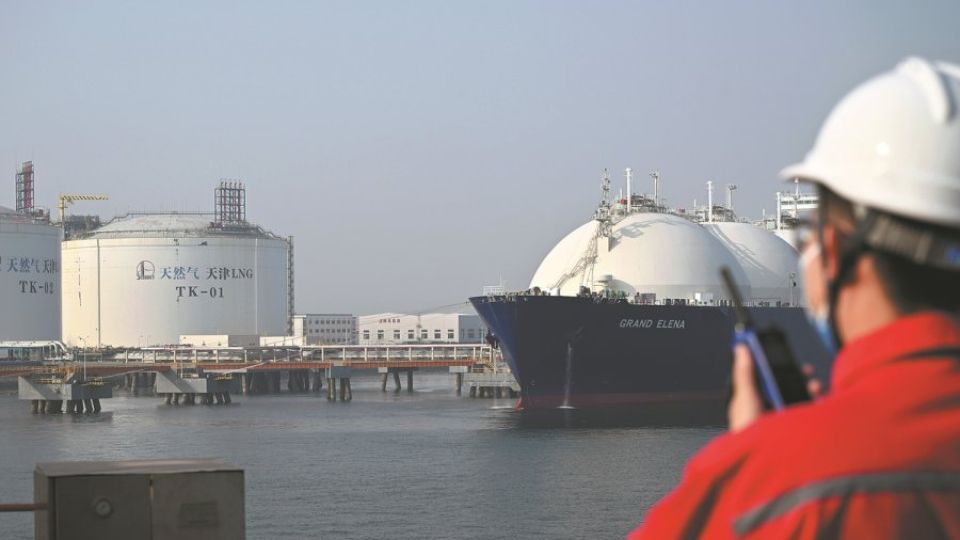June 7, 2023
BEIJING – China will lead Asian natural gas demand to return to modest growth of around 3 percent this year, the highest among all regions worldwide, according to a recently released gas market report by the International Energy Agency.
Thanks to the ever-optimizing anti-COVID-19 policies and sound momentum of economic recovery in China — the world’s largest importer of natural gas — the country’s consumption of the hydrocarbon this year is expected to rebound by 5 to 7 percent, led by the industrial sector, the IEA said.
Industry experts said China’s natural gas consumption last year fell for the first time in two decades, down more than 1 percent, due to slower economic growth, sluggish industrial activity and higher commodity prices.
As growth momentum across sectors is being restored, demand for natural gas, a relatively clean fossil fuel as well as an important bridge leading to China’s ambition of peaking carbon by 2030 and achieving carbon neutrality by 2060, is on course for rebound, said Lin Boqiang, head of the China Institute for Studies in Energy Policy at Xiamen University.
On the other hand, the IEA expects China’s domestic liquefied natural gas demand to also increase by 10 percent in 2023, fueled by the expected recovery of economic activity.
LNG imports, the main form of the growing use of natural gas, account for around 70 percent of the increase in gas to be consumed in emerging Asian nations until 2030, the BP Energy Outlook 2023 said.
The forecast is echoed by strategic research provider BloombergNEF, which estimates that China’s LNG demand is set to recover in 2023 as economic growth recovers, with LNG imports likely to surpass 70 million metric tons, up 11 percent year-on-year.
Forecasts from analysts at European research firms Rystad Energy, Wood Mackenzie and Independent Commodity Intelligence Services put China’s LNG demand between 70 million and 72 million tons in 2023, 9 to 14 percent higher than in 2022.
In 2022, China imported 63.44 million tons of LNG, down 19.5 percent year-on-year, data from the General Administration of Customs showed. This is the first time the figure dropped in seven years.
The country imported 77 million tons in 2021, up 18 percent year-on-year, it said.
Against the backdrop of its carbon peak and neutrality goals, State-owned enterprises in China have been leading China’s expansion of capacity to handle LNG, while private companies are playing an increasingly active role in building LNG terminals.
China National Offshore Oil Corp, the country’s top importer of LNG last year, imported 26.69 million tons of the hydrocarbon last year, accounting for around 43 percent of China’s total LNG imports.
China Petrochemical Corp, also known as Sinopec — the world’s largest refiner by volume — reached a 27-year agreement with QatarEnergy late last year to buy 4 million tons of LNG annually beginning around 2026.
Private Chinese energy company ENN Group signed a contract last year with US-based Energy Transfer to buy 2.7 million tons of LNG annually for 20 years. ENN also increased its purchase agreement with Next-Decade, also headquartered in Texas, to buy 2 million tons a year for 20 years.
Lin said China has been ramping up construction of LNG infrastructure and gas storage facilities in recent years, with a long list of LNG terminals under construction, hoping to take advantage of its flexible role in seasonal peak regulation, emergency supply protection and response to emergencies.
The total turnover capacity of LNG receiving stations in China reached 97.3 million tons per year by the end of 2022, according to the Economics and Technology Research Institute, which is under China National Petroleum Corp.
CNOOC led with 28.6 million tons per year, accounting for 29.4 percent of the country’s total capacity, followed by China Oil & Gas Piping Network Corp with 28.4 percent, CNPC with 13.7 percent and China Petrochemical Corp at 13.4 percent, it said.


